With the best hydroponic plants, enjoying the garden you want has never been easier, whether for a business, personal, or in an urban or rural setup.
It goes without saying that hydroponic plants are easy, convenient, and practical to grow.
With the best hydroponic plants, caring for your garden has never been easier.
After all, all you need is a reliable water supply system with adequate nutrients, eliminating the need for soil, digging, or navigating weeding.
In addition to water usage efficiency, hydroponic plants grow faster and more efficiently while covering at least three times the traditional garden space.
So, to set up the best and most successful, easy-to-maintain garden, here are 10 of the best hydroponic plants you should try cultivating this year.
Table Of Content
| Most Viable Hydroponic Plants |
| Tips for Keeping Hydroponic Plants |
| Video of the Best Hydroponic Plants for Cultivation |
| FAQs |
10 Most Viable Hydroponic Plants To Try This Year
Here are the 10 best plants for a hydroponic garden to try out this year:
1. Lettuce

- Experience level: Beginner friendly
- Plant type: Leaf vegetable
- Light needs: Up to 14 hours
- pH level: 6 to 7
- Temperature level: 44 to 69.8 degrees Fahrenheit
- Growth Time: 30 days or less
- Hydroponic system: Any
Lettuce is one of the most popular fast growing hydroponic plants to grow.
In fact, lettuce is an excellent option as a beginner for hydroponic plants at home.
Thanks to their light environment parameter needs, lettuce is pretty easy to grow in hydroponics.
Additionally, the leafy plant features a fast growth rate, allowing you to enjoy your first harvest salad in just a month or under.
You can produce any variety, whether iceberg, romaine, Bibb, or Boston lettuce.
Further, lettuce doesn’t take up much space when growing, the perfect plant option to grow in hydroponics.
You can also grow lettuce in any kind of hydroponic system, whether NFT, Flow, or Ebb, to name a few.
Keep in mind, however, that hydroponic lettuce requires sufficient light and cool temperatures to grow.
To get the best and rich supply of your harvest, you want to go for stagger planting.
2. Watercress

- Experience level: All
- Plant type: Aquatic flowering plant/leafy vegetable
- Light needs: 12 to 14 hours
- pH level: 6.5 to 6.8
- Temperature level: 77 to 86 degrees Fahrenheit
- Growth Time: 45 to 60 days
- Hydroponic system: DWC
What better way to add flavor and life to your salad than with additional leafy greens and herbs?
Watercress is a good option that doesn’t require much effort to grow. Like lettuce, watercress is another excellent low-maintenance hydroponic plant.
It’s even easier to grow in hydroponics due to its aquatic nature. Watercress is also quite tolerable, thriving in warm temperatures and even growing throughout the seasons of the year.
Due to the minimal care needs, watercress can be grown in a passive hydroponic system, like deep water culture.
This boosts the efficiency and cost-effectiveness of growing this aquatic leafy vegetable.
3. Spinach
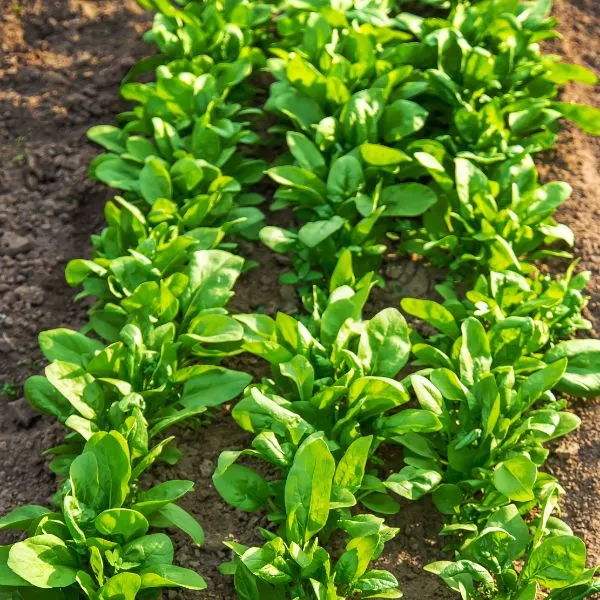
- Experience level: Beginner friendly
- Plant type: Leaf vegetable
- Light needs: Up to 12 hours
- pH level: 6.0 to 7.5
- Temperature level: 65 to 72 degrees Fahrenheit
- Growth Time: 40 days or less
- Hydroponic system: NFT
Whether Savoy or red cardinal, spinach is another exciting plant to include in your hydroponic garden.
Spinach grows impressively well in a hydroponic system and guarantees you a year-round supply of leafy greens.
Hydroponic techniques offer incredible conditions for your spinach to grow and ensure adequate nutrient absorption.
Like many other leafy vegetables, hydroponic spinach grows faster while using less water.
Additionally, fine-tuning parameters, such as the temperature allows you to achieve sweeter and fuller growth.
4. Bell Peppers
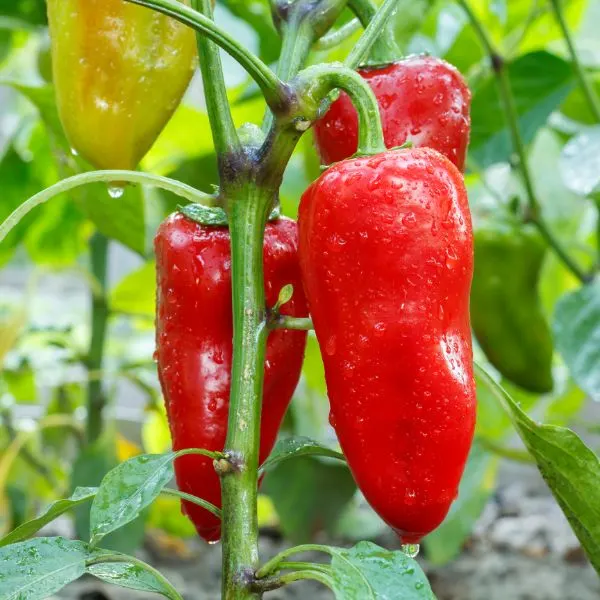
- Experience level: Advanced
- Plant type: Flowering plant/vegetable
- Light needs: 14 to 18 hours
- pH level: 6 to 6.5
- Temperature level: 73.4 to 78.8 degrees Fahrenheit
- Growth Time: 70 days to 90 days
- Hydroponic system: DWC, Ebb or Flow
Did you know that you can grow just more than leafy greens in hydroponics?
You can save massively on your weekly grocery shopping by growing easy hydroponic plants such as bell peppers.
In addition to adding to your garden’s stunning and colorful aesthetics, bell peppers grow pretty well and relatively quickly in hydroponics. However, they are not the easiest culinary vegetables to grow.
Typically, hydroponic systems facilitate smaller plants and vegetables for them to grow more efficiently.
So, bell peppers require more care due to their large size when they grow to full height.
You have to prune them from time to time and pinch them (to about 8 inches) to reduce their growth.
Doing this doesn’t only allow the plants to thrive but also produces bigger and healthier fruits.
Further, bell peppers naturally require a lot of light to grow.
Therefore, even with artificial fluorescent lighting, the plants need at least 14 to 18 hours of exposure to light.
Tip: If you want to save a buck, you can substitute in lighting from fluorescent lights with natural lighting in outdoor open-shaded settings.
5. Tomatoes
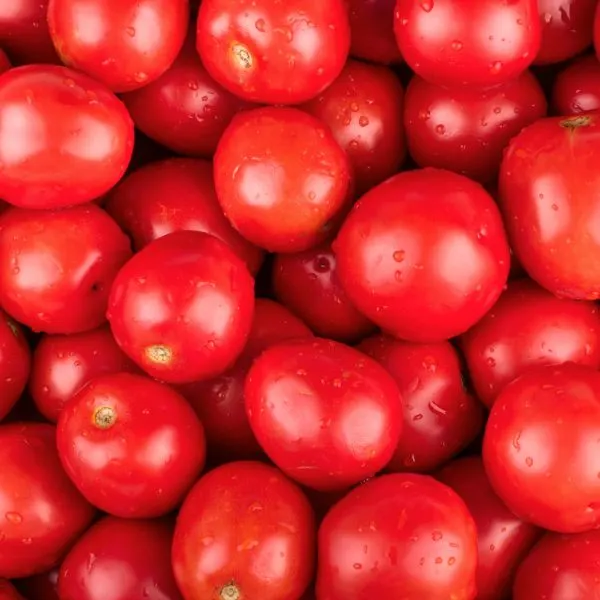
- Experience level: All
- Plant type: Vegetable plant
- Light needs: Up to 8 hours
- pH level: 5.5 to 6.5
- Temperature level: 71.6 to 78.8 degrees Fahrenheit
- Growth Time: 75 to 90 days
- Hydroponic system: DWC
Whether cherry or regular varieties, you can grow an adequate supply of tomatoes for your household by yourself.
Tomatoes are quite easy to grow, requiring warm temperatures and sufficient lighting.
Further, tomato plants usually produce crawling vines.
However, you can control their growth by using deep water culture and clay pebbles as growth mediums.
One thing you have to remember is that many vegetables, like tomatoes, develop slightly varying flavors.
Additionally, their nutrient composition is based on their growth conditions.
So, while some people may not like the somewhat subtle taste of hydroponic tomatoes, they are still very healthy.
Further, growing tomatoes hydroponically protects them from pest attacks.
6. Cucumbers
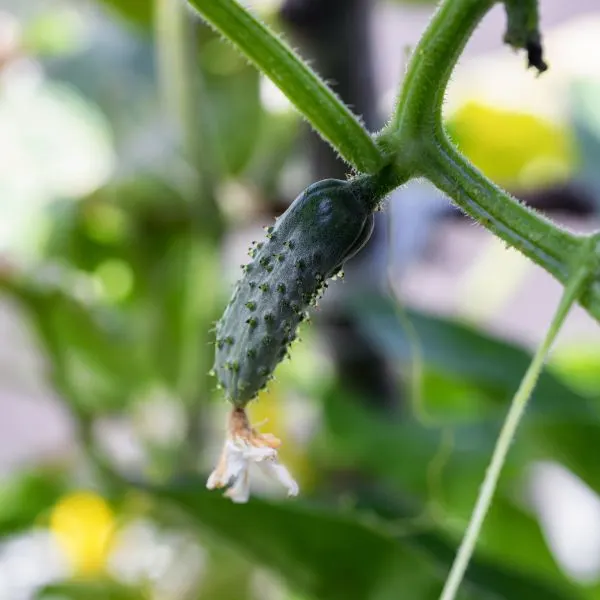
- Experience level: All
- Plant type: Vegetable plant
- Light needs: Up to 14 hours
- pH level: 5.5 to 6.0
- Temperature level: 75 to 85 degrees Fahrenheit
- Growth Time: 75 to 90 days
- Hydroponic system: DWC
Joining the list of some of the most viable hydroponic plants, you should certainly include cucumbers in your hydroponic garden.
Like the greenhouse, growing cucumbers in a hydroponic garden create the perfect environment for the best growth, thanks to the moist and warm environment offered.
These vine vegetables aren’t only easy to grow hydroponically, but they are also quite versatile.
Since they require almost identical environmental parameters, you can grow anything from large American cucumbers, and seedless European cucumbers to Mediterranean varieties.
But, cucumbers are summer plants, so you want to expose them to as much lighting and high temperatures, about 75 to 85 degrees Fahrenheit.
7. Strawberries
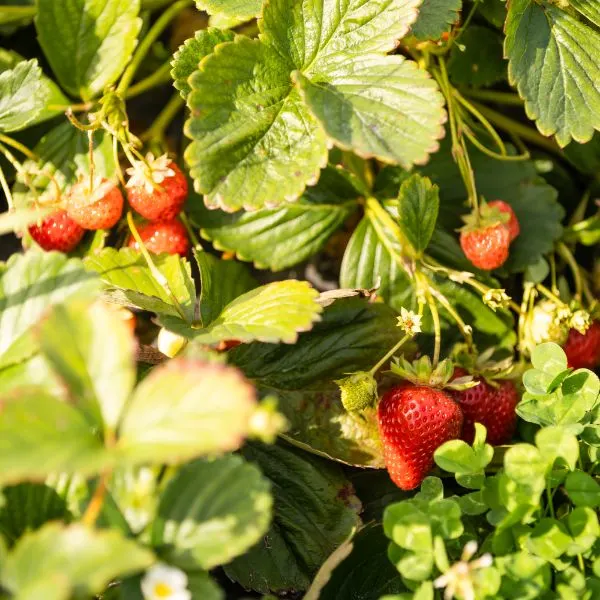
- Experience level: All
- Plant type: Fruit/berry plant creeper
- Light needs: 6 to 10 hours or more
- pH level: 5.5 to 6.2
- Temperature level: 55.4 to 69.8 degrees Fahrenheit
- Growth Time: 60 days or less
- Hydroponic system: Ebb or flow
Strawberries are amongst the most popular fruits to grow hydroponically.
While they require slightly lower temperatures, hydroponic systems offer an excellent growth environment.
Generally, strawberries typically grow in cooler climates.
Nonetheless, the best part of using hydroponic systems is that you can easily manipulate these parameters.
Further, their fast growth process allows you to enjoy freshly grown strawberries from your garden in 8 or fewer weeks.
While strawberries are seasonal, the best part of growing them hydroponically is you can harvest them all year round.
After all, it’s all about fine-tuning the right conditions.
8. Basil
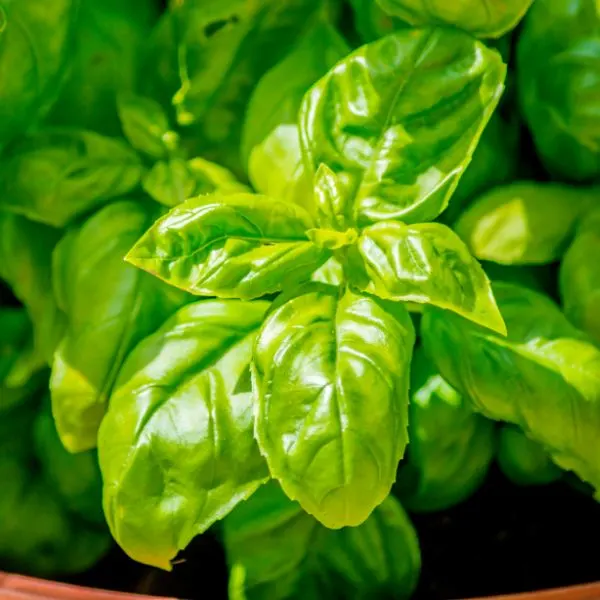
- Experience level: Beginner friendly
- Plant type: Herb
- Light needs: 6 to 10 hours or more
- pH level: 5.5 to 6.5
- Temperature level: 59 to 77 degrees Fahrenheit
- Growth Time: 28 days or less
- Hydroponic system: NFT or DWC
This is one of the good plants for hydroponics beginners.
Basil joins the likes of chives, dill, mint, oregano, and rosemary as one of the best hydroponic herbs.
In fact, but for a small list of herbs, hydroponic systems are truly designed for herbs to thrive.
They offer the best conditions for fast growth and small space for more plant volume which is perfect for herbs.
In fact, herbs are a great avenue to exploring hydroponic systems before you plant bigger and more complex food items like vegetables and some fruits.
Additionally, grown right, hydroponic herbs, such as basil, deliver better taste and aromatics compared to herbs grown traditionally.
9. Peace Lily
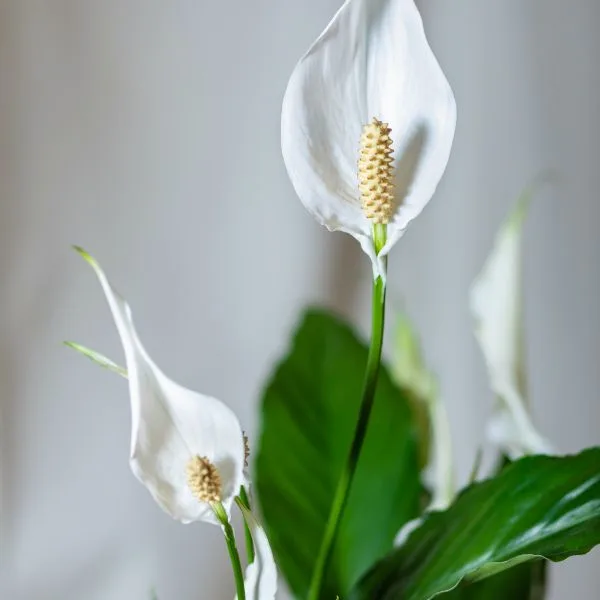
- Experience level: All
- Plant type: Herbaceous perennial
- Light needs: 6 to 8 hours
- pH level: 5.8 to 6.5
- Temperature level: 68 to 80 degrees Fahrenheit
- Growth Time: Up to 3 years
- Hydroponic system: distilled water and hydroponic container
If you love indoor plants, you can adopt a greener way to keep your mini indoor garden.
Regular indoor plants like a peace lily or Chinese money plant allow you to grow hydroponically as long as you maintain the right conditions.
Unlike some indoor plants, these plants continue to do well in wet conditions.
Generally, a peace lily grows up to 6 inches in height. However, this value decreases to about half indoors and in hydroponics.
The peace lily is also unique in the blooms it produces to add extra beauty to your indoor space.
But, it will take you slightly longer to grow it compared to your regular lettuce or spinach.
10. Orchids
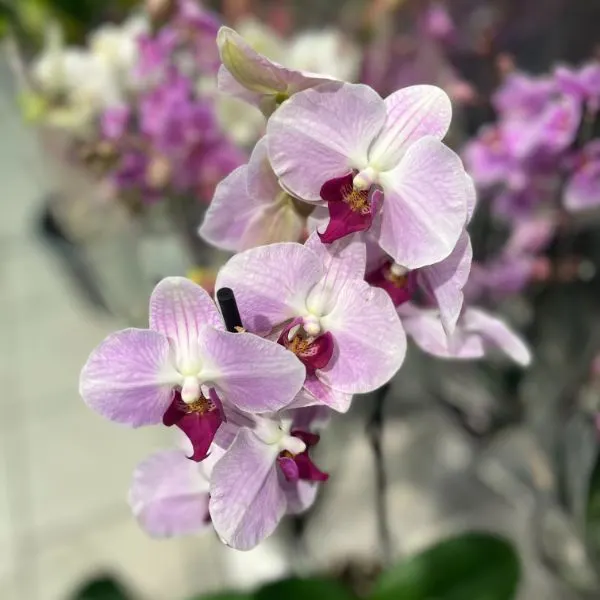
- Experience level: All
- Plant type: Flowering plant
- Light needs: 8 to 12 hours or more
- pH level: 5.5 to 6.5
- Temperature level: 64.4 to 78.8 degrees Fahrenheit
- Growth Time: 90 days or more
- Hydroponic system: Any
Our personal favorites, orchids, are beautiful in a traditional outdoor garden.
But, they get even more stunning with a hydroponic setup.
Among the few flowering plants that do well hydroponically, orchids produce full and healthy blooms when grown in the right conditions.
Typically, you will notice the first stems in about 90 days, but it will take longer to start seeing the full stunning blooms.
Further, orchids are among flowering plants requiring plenty of light for full growth.
So, they need at least 8 hours of exposure to light.
While they will grow with less lighting exposure, the flowers may not bloom fully or bloom at all.
3. Tips for Keeping Hydroponic Plants
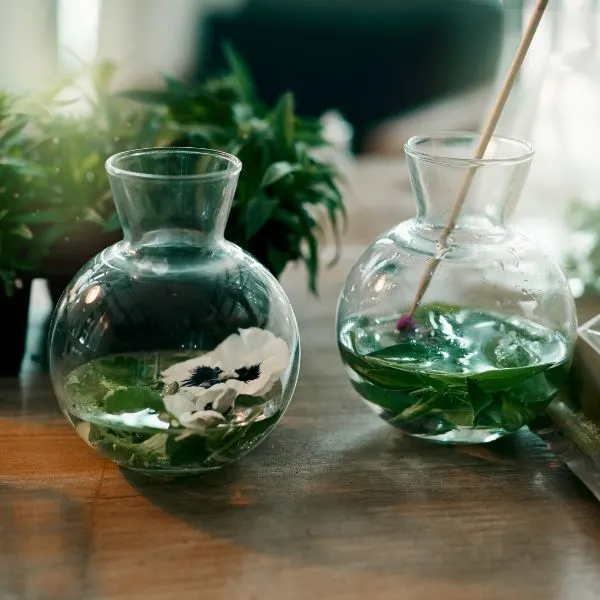
With the best recommended hydroponic plants, your next step is to figure out the best growing practices.
Sure, the 10 plants above are the top picks, but you can always add more to diversify your garden.
This is why we’ve shared three simple ways you can identify and choose the best hydroponic plants to include in your garden.
1. Think of Space
Part of the marketing for hydroponic systems is that they allow plants to grow in smaller spaces.
After all, hydroponics is designed for urban gardens with limited space. This, in turn, increases the volume of plants you can harvest.
So, when choosing plants, you want to go for options that can adapt to this environment.
Plants like bell peppers will grow pretty tall. However, you can prune them to maintain the ideal size.
But, you want to stay away from larger-sized plants like melons or pumpkins.
Further, some fruits are ideal to grow in hydroponics, but a larger number of them aren’t ideal.
2. Cross–check the Environmental Needs
For hydroponic plants to grow successfully, you want to maintain certain environmental parameters.
These include pH, temperature, light, and adequate nutrients.
For example, for strawberries to grow successfully, you need to maintain low temperatures.
On the other hand, orchids require plenty of light exposure for their flowers to bloom fully.
So, if you want to grow a certain plant, you have to know the parameters needed and be sure that you can maintain them.
Tip: As a beginner, you may go for plants like lettuce that require minimal maintenance and work your way up to more advanced-level plants.
3. Size and Growth Pattern Are Extremely Important
This part is essential and this point leads up from the very first one.
When choosing the best hydroponic plants, you want to stay away from plants that have vines or grow extremely tall.
This is because they will disrupt the overall hydroponic setup and prevent proper growth.
Instead, if you wish to have climbing or vining plants, you have to create special support to guide the growth.
When it comes to tall plants, you can go for a few select ones, such as bell peppers that you can prune and pinch to limit the height.
But, this will only work for plants that produce vegetables or fruits that are relatively smaller in size.
When considering the size of your prospective plant, you have to ensure you will be able to control its ambient conditions (i.e. temperature, light exposure, pH) despite the size.
If you think you may experience some problems along the way, then, it is probably not the right plant.
Video of the Best Hydroponic Plants for Cultivation
FAQs
Do you still have lingering questions about hydroponic plants? Check out these commonly asked questions by readers just like you;
What Are the Best Plants to Grow Hydroponically?
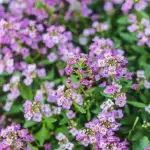
You can find a myriad of plants you can grow hydroponically, whether fruits, vegetables, flowers, or herbs, to mention a few.
To ensure you choose the right plant, simply look out for these three key features;
Doesn’t consume too much space
The environment can be replicated/tweaked (i.e. adjust the temperature, light, pH, etc.)
Non-complicated growing habits (not too tall, doesn’t vie or climb, doesn’t produce large fruit or vegetables, etc)
What Are the Worst Plants to Grow in Hydroponics?
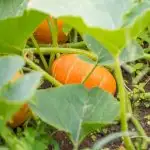
Some of the worst plants to grow in hydroponics include vines, trees, and grains.
This is because these types of plants don’t really conform to the three key factors of viable hydroponic plants.
Common plants to avoid growing in hydroponics include corn, melon, papaya, and squash.
Typically, such plants tend to have extensive roots, extreme sunlight needs), large fruit size, and vining.
What Are The Benefits of Hydroponic Plants?

Healthier and nutrient-packed.
Faster growth rate.
Efficient water usage.
Use less space to produce the same amount you would from a larger traditional space.
More produce harvested.
Perfect for urban spaces due to the limited space required.
You grow your own food and know where it comes from.
No pesticides used – yet, lower risks of pest infestation.
You don’t have to worry about weeds.
Are There Any Drawbacks to Growing Hydroponic Plants?

As much as hydroponic plants come with benefits, they also have several drawbacks.
These include;
Initial setup expenses may be costly depending on the type of system you go for.
You may require a constant power supply.
Some plants require close monitoring and maintenance.
While hydroponic plants avoid pest infestation, they can still suffer from some waterborne diseases.
What is the fastest growing plant in hydroponics?

It’s difficult to say what the fastest growing plant in hydroponics is, as different plants have different growth rates and can be affected by a variety of factors, including the type of hydroponic system being used, the quality and composition of the nutrient solution, the temperature and humidity of the growing environment, and the skill and experience of the grower.
However, some plants tend to grow faster than others in hydroponic systems. For example, lettuce, herbs, and spinach are fast-growing leafy greens that can be successfully grown in hydroponics. Tomatoes, peppers, and cucumbers are also relatively fast-growing plants that can be grown in hydroponics.
In general, plants that are grown for their leaves or shoots, rather than their fruits or roots, tend to grow more quickly in hydroponics.
It’s important to carefully research the specific requirements and growth habits of the plants you are interested in growing in hydroponics, and to provide them with the appropriate nutrients, light, and other growing conditions to ensure optimal growth.
What cannot be grown hydroponically?
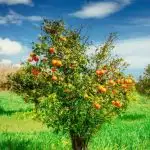
There are very few plants that cannot be grown hydroponically, as most plants are able to thrive in a hydroponic system if provided with the right conditions.
Some plants though, may be more challenging to grow hydroponically than others, due to their specific requirements or growth habits.
For example, some plants have deep root systems that may be difficult to accommodate in a hydroponic system, or may require a large volume of soil or other growing medium that is not practical in a hydroponic setup.
Other plants may be more sensitive to changes in pH or nutrient levels, or may be more prone to pests or diseases when grown hydroponically.
What is the easiest vegetable to grow hydroponically?
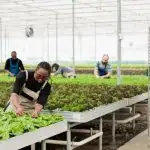
There are many vegetables that are relatively easy to grow hydroponically, as long as you provide them with the right conditions and nutrients. Some examples of easy-to-grow vegetables in hydroponics include: Lettuce, Herbs such as basil, cilantro and parsley, spinach and more.
All of these are in the list.
Wrap-up
With any of the best hydroponic plants listed above, you can easily set up your private garden and start harvesting your produce.
The best part of hydroponic plants is you can set up your sanctuary however you want, whether for an endless supply of fresh food or the most beautiful floral plant arrangement.
To make it even easier and more engaging, you can pick hydroponic plants based on your preferences.
If you are only starting your very first garden, simple and low-maintenance plants like lettuce and spinach are best.
Over time, you can transition to more advanced plants, such as bell peppers.
Check out more types of things
